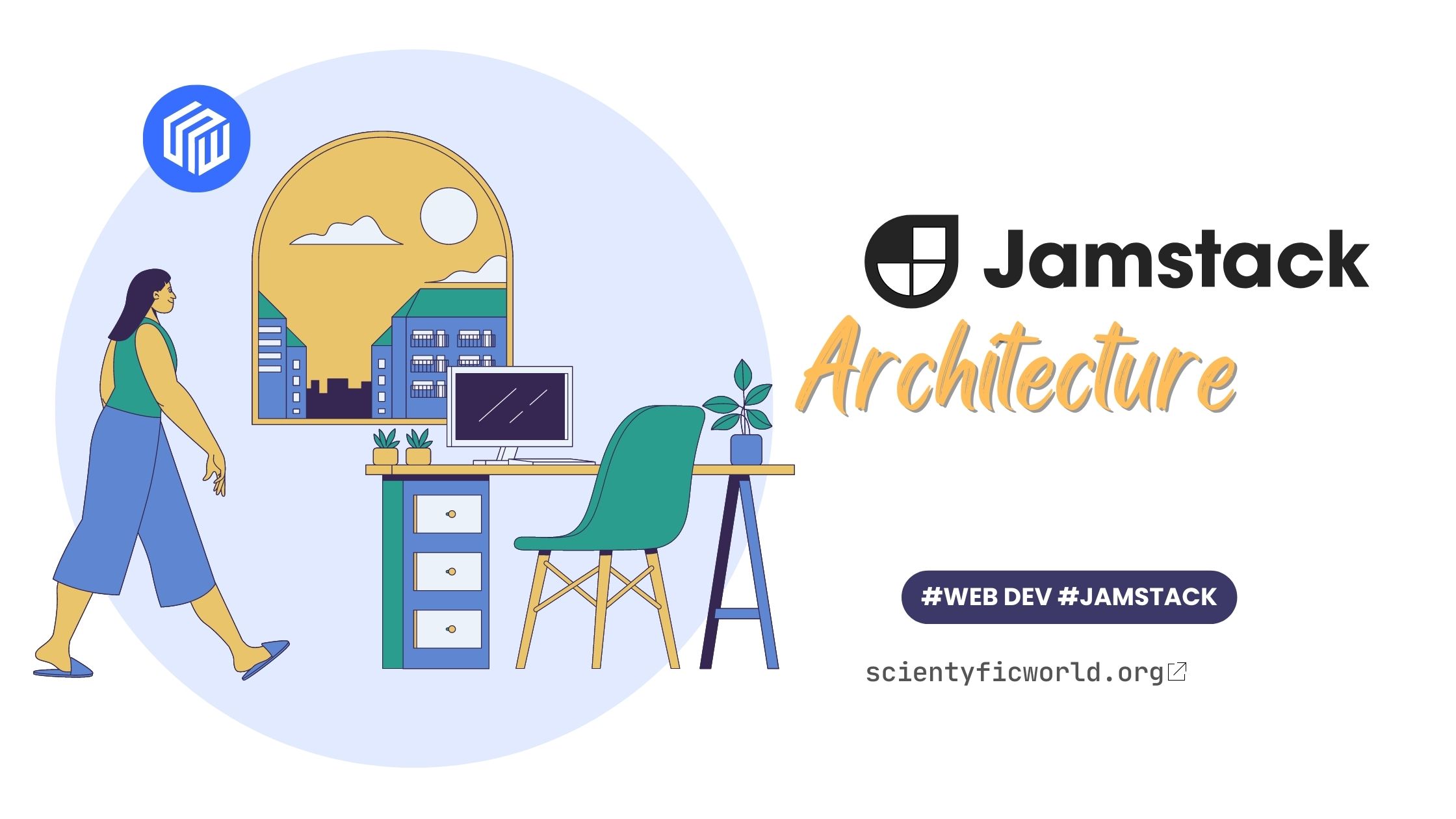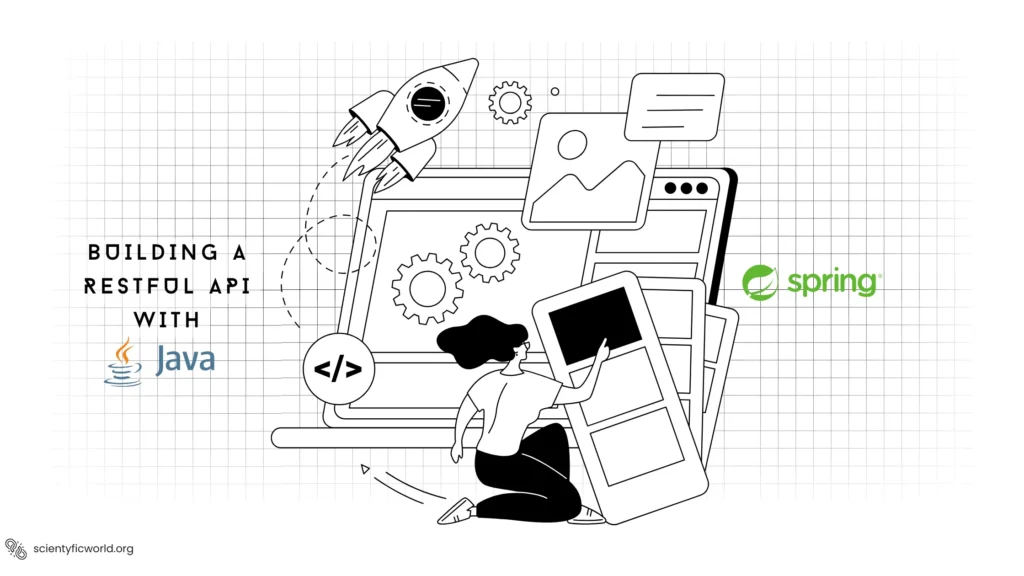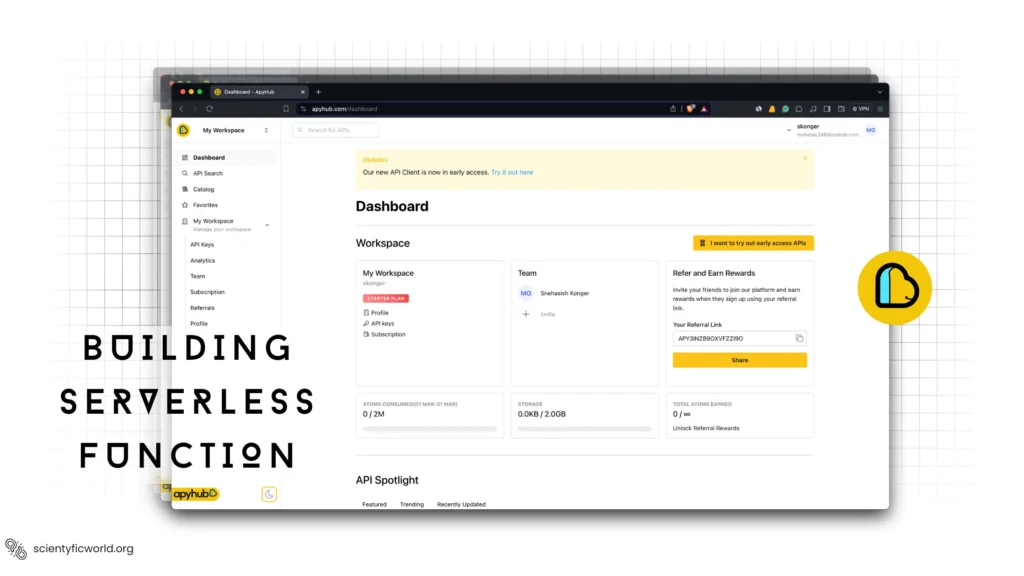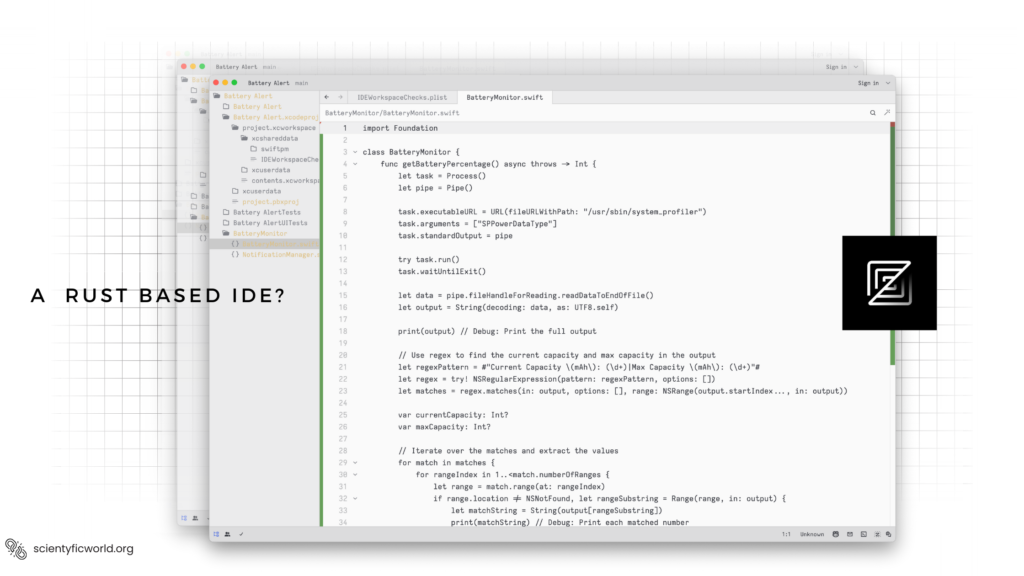Follow Us:
JAMstack Architecture: a modern approach to web development

In this in-depth guide, we will explore the JAMstack architecture in detail, including its components and how they work together to create a fast, secure, and scalable web experience. We will also examine real-world examples of JAMstack in action, and how it compares to traditional web development in terms of performance, security, and cost. Additionally, we will provide a step-by-step guide on setting up a JAMstack project, as well as best practices and tips for building and deploying JAMstack applications.
This article is intended for developers who are familiar with web development and are looking to learn more about JAMstack. It is assumed that the reader has a basic understanding of HTML, CSS, JavaScript, and web development concepts.
The article is structured as follows: In the next section, we will delve into the JAMstack architecture and explore its components and how they work together. We will also discuss best practices and tips for building JAMstack applications. In the following section, we will examine real-world examples of JAMstack in action and compare it to traditional web development. We will also provide a step-by-step guide on setting up a JAMstack project, as well as best practices and tips for building and deploying JAMstack applications. Finally, we will summarize the key takeaways and provide suggestions for further reading and resources on JAMstack.
JAMstack Architecture
JAMstack, short for JavaScript, APIs, and Markup, is a modern approach to web development that has gained popularity in recent years. It is a way of building web applications using a combination of client-side JavaScript, reusable APIs, and pre-built Markup. This architecture allows for faster performance, increased security, and lower costs compared to traditional web development methods.
The JAMstack architecture is based on three main components: JavaScript, APIs, and Markup.
Here is a sample diagram of the JAM stack architecture.
Client
/ \
/ \
CDN(pre-built HTML, CSS and JS)
| |
| |
JavaScript API
(dynamic functionality) (data storage and retrieval)
+------------+ +---------------+ +----------------+ +-----------------+
| JavaScript |----| Framework/Lib |------| APIs |----| Markup |
+------------+ +---------------+ +----------------+ +-----------------+
| | | |
| | | |
+-------------+ +------------------+ +---------------+ +-----------------+
| Components | | State Management | | Data Fetching | | Routing |
+-------------+ +------------------+ +---------------+ +-----------------+
| | | |
| | | |
+----------------+ +--------------+ +-----------------+ +-------------------+
| Utilities | | Third-Party | | Custom Hooks | | Layouts and Pages |
+----------------+ +--------------+ +-----------------+ +-------------------+
This diagram shows how the client makes a request to the website, which is served by a CDN(Content Delivery Network). The CDN, in turn, serves the pre-built and pre-rendered static HTML, CSS, and JavaScript files, which make up the markup component of JAMstack. The JavaScript component, which is executed by the client’s browser, communicates with the API component, which is responsible for server-side functionality such as data storage and retrieval. The API component can be built using any programming language or framework, and it can be hosted on any server or cloud provider.
JavaScript: JavaScript is used to handle the dynamic functionality of a JAMstack website, such as user interactions and form submissions. This is typically done through the use of a JavaScript framework or library, such as React or Vue.js. JavaScript runs on the client side, making the application fast and responsive.
APIs: APIs are used to handle server-side functionality, such as data storage and retrieval. These can be custom-built or third-party APIs, such as those offered by services like Firebase or Contentful. APIs are used to connect the client-side JavaScript to the server-side functionality, which is usually stateless and cached.
Markup: Markup is used to define the structure and layout of a JAMstack website. This is typically done using a static site generator, such as Jekyll or Gatsby, which generates the HTML, CSS, and JavaScript for the website. The generated files are then deployed as static files, which can be served by a CDN (Content Delivery Network) making the website fast and secure.
Working Together: The JavaScript handles dynamic functionality, the APIs handle server-side functionality, and the pre-built Markup is served to the user, eliminating the need for server-side rendering. This allows the website to be fast and responsive, as the browser only needs to request the markup and JavaScript once, and the APIs only when needed.
One of the key advantages of the JAM stack is that it separates the concerns of building a web application. The front-end developers can focus on building the client-side JavaScript, the back-end developers can focus on building the APIs and the designers can focus on the layout and design of the website.
Best practices for building JAM stack applications include:
- Using a CDN for serving the static files, it will improve the website load time and security.
- Using Git for version control and continuous integration, it will make the deployment process easier.
- Using pre-built components and libraries to speed up the development process.
- Use automated testing to ensure the quality of the application.
//Example of a simple JAMstack application
//JavaScript
import React from 'react'
import axios from 'axios'
function App() {
const [data, setData] = React.useState(null)
React.useEffect(() => {
axios.get('https://example-api.com/data')
.then(response => setData(response.data))
}, [])
return (
<div>
{data ? data.map(item => <p key={item.id}>{item.name}</p>) : 'Loading...'}
</div>
)
}
export default App
//Markup
<!DOCTYPE html>
<html>
<head>
<title>My JAMstack App</title>
</head>
<body>
<div id="app"></div>
<script src="bundle.js"></script>
</body>
</html>
In the next section, we will see real-world examples of JAMstack in action and how it compares to traditional web development in terms of performance, security, and cost.
JAMstack in Action
JAMstack has been widely adopted by companies and developers for building fast, secure, and scalable websites and web applications. Some popular examples of JAMstack in action include:

- GitHub: GitHub is a popular example of a JAM stack in action. By using the JAM stack, GitHub was able to improve the load time of its documentation pages and provide a better user experience. Additionally, GitHub was able to improve the security of its documentation pages by removing the need for server-side rendering.
- Airbnb: Airbnb uses the JAM stack to build its internal tools, which are secure and easy to scale. By using the JAM stack, AirBnB was able to improve the security of its internal tools and reduce the costs of hosting and maintaining them. Additionally, by separating the concerns of building a web application, AirBnB was able to speed up the development process and improve the overall developer experience.
- Netlify: Netlify is a popular JAM stack hosting platform that allows developers to easily deploy and host their JAM stack websites and web applications. By using Netlify, developers can take advantage of the benefits of JAMstack without having to manage the infrastructure themselves. Netlify is also known for its easy integration with popular JAMstack technologies and its wide range of features.
- Stackbit: Stackbit is a cloud-based platform that allows developers to easily connect different JAM stack technologies and build websites using a drag-and-drop interface. By using Stackbit, developers can quickly and easily build JAM stack websites without having to write code. Additionally, Stackbit is known for its easy integration with popular JAMstack technologies and its wide range of features.
Comparison to Traditional Web Development
JAMstack can be compared to traditional web development in terms of performance, security, and cost. Traditional web development often relies on server-side rendering and a backend or a database, which can slow down website load times and make them more vulnerable to hacking attempts. JAM stack, on the other hand, uses prebuilt Markup and client-side JavaScript, which makes websites faster and more secure. Additionally, JAM stack websites are cheaper to host and maintain as they do not require a backend or a database.
In terms of developer experience, the JAM stack offers a more modular and reusable code, with easier deployment. Traditional web development often requires a separate server-side and client-side codebase and can have a more complex deployment process.
Discussion on the future of JAMstack and its potential impact on web development
JAMstack is a relatively new approach to web development, but it has already gained a lot of popularity among developers and companies. Its benefits in terms of performance, security, and cost make it an attractive option for building web applications. As more companies and developers adopt the JAM stack, it will likely become an even more popular approach to web development.
JAMstack is also likely to have a big impact on the way web development is done. Its focus on pre-built Markup and client-side JavaScript, as well as its use of APIs, is a shift away from traditional web development methods that rely on server-side rendering and a backend or a database. Additionally, JAMstack’s modular and reusable code makes it easier for developers to build and maintain web applications, which could lead to an increase in the number of web applications being built.
As the web continues to evolve and new technologies become available, JAM stack is likely to evolve as well. We can expect to see new JAMstack technologies, such as Jamstack frameworks, being developed to make it even easier for developers to build and maintain web applications.
In summary, JAMstack is a modern approach to web development that offers faster performance, increased security, and lower costs compared to traditional web development methods. Its popularity is likely to increase in the future, and it is likely to have a big impact on the way web development is done.
Setting up a JAMstack Project
To set up a JAM stack project, you will need to use a combination of tools and technologies. Some of the most commonly used tools and technologies for the JAM stack include:
- A static site generator: This is used to generate the HTML, CSS, and JavaScript for the website. Some popular static site generators include Jekyll, Gatsby, and Next.js.
- A JavaScript framework or library: This is used to handle the dynamic functionality of the website. Some popular JavaScript frameworks and libraries include React, Vue.js, and Angular.
- An API: This is used to handle server-side functionality, such as data storage and retrieval. Some popular APIs include Firebase, Contentful, and GraphQL.
- A Git repository: This is used for version control and continuous integration.
- A hosting platform: This is used to deploy and host the website. Some popular hosting platforms for JAMstack include Netlify, AWS, and Heroku.
Step-by-Step Guide
- Choose a static site generator and set it up for your project.
- Choose a JavaScript framework or library, and set it up for your project.
- Choose an API, and set it up for your project.
- Create a Git repository, and connect it to your project.
- Choose a hosting platform, and deploy your project to it.
Best Practices and Tips
- Using a CDN for serving the static files, will improve the website load time and security.
- Using Git for version control and continuous integration, it will make the deployment process easier.
- Use pre-built components and libraries to speed up the development process.
- Use automated testing to ensure the quality of the application.
- Keep your API endpoints simple and well-organized, it will make it easy to maintain the application.
- Use environment variables to store sensitive information, such as API keys and passwords.
//Example of setting up a JAMstack project
//Using Gatsby as the static site generator
npm install -g gatsby-cli
gatsby new my-project
cd my-project
gatsby develop
//Using React as the JavaScript framework
npm install react react-dom
//Using Firebase as the API
npm install firebase
//Using Git for version control
git init
git add .
git commit -m "Initial commit"
//Using Netlify for hosting
netlify login
netlify init
netlify deployBy following these steps, you can set up a JAM stack project quickly and easily. JAM stack offers many benefits in terms of performance, security, and cost, making it a great choice for building web applications.
In the next section, we will summarize the key takeaways from the article and provide suggestions for further reading and resources on JAMstack.
Conclusion
In this in-depth guide, we have explored the JAM stack architecture in detail, including its components and how they work together to create a fast, secure, and scalable web experience. We have also examined real-world examples of JAM stack in action, and how it compares to traditional web development in terms of performance, security, and cost. Additionally, we have provided a step-by-step guide on setting up a JAMstack project, as well as best practices and tips for building and deploying JAM stack applications.
Some key takeaways from this article include:
- JAM stack is a modern approach to web development that offers faster performance, increased security, and lower costs compared to traditional web development methods.
- JAM stack is based on three main components: JavaScript, APIs, and Markup.
- JAMstack is being widely adopted by companies and developers for building fast, secure, and scalable websites and web applications.
- JAMstack offers a more modular and reusable code, with easier deployment.
- JAMstack is likely to have a big impact on the way web development is done in the future.
For further reading and resources on JAMstack, we recommend checking out the following:
- The JAMstack website: https://jamstack.org/
- The Netlify website: https://www.netlify.com/
- The Gatsby website: https://www.gatsbyjs.org/
- The React website: https://reactjs.org/
JAMstack is a modern approach to web development that offers many benefits in terms of performance, security, and cost. It is a great choice for building web applications, and its popularity is likely to increase in the future. By following the best practices and tips outlined in this article, you can set up a JAMstack project and start building web applications that are fast, secure, and scalable. With the help of JAMstack, developers can focus on building the client-side JavaScript, the back-end developers can focus on building the APIs and the designers can focus on the layout and design of the website, which leads to an efficient development process. JAMstack is a great way to modernize your web development stack and take advantage of the latest advancements in web technologies.



